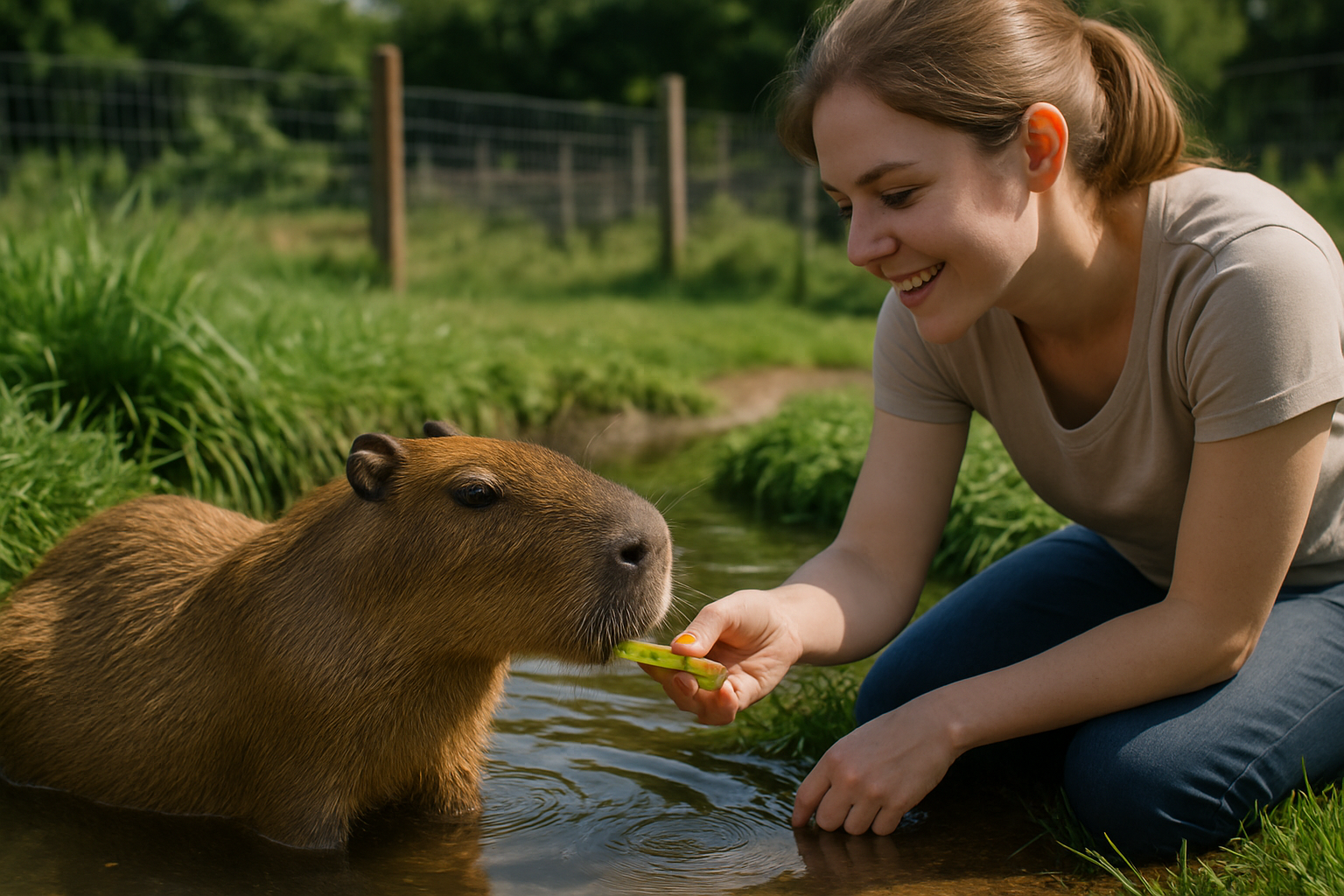The Surprising World of Capybara Companionship
Imagine a pet that's part guinea pig, part hippo, and all charm. Enter the capybara, the world's largest rodent and an increasingly popular exotic pet. These gentle giants from South America are winning hearts with their docile nature and unique appearance. But what does it really take to keep a capybara as a pet? Let's dive into the fascinating world of capybara companionship.

The Legalities of Owning a Capybara
Before considering a capybara as a pet, it’s crucial to understand the legal landscape. In many countries and states, owning a capybara requires special permits or may be entirely prohibited. For instance, in the United States, capybara ownership is legal in Texas and Pennsylvania but banned in California and Georgia. Prospective owners must thoroughly research local laws and obtain necessary permits before bringing a capybara home.
Creating the Perfect Capybara Habitat
Capybaras are semi-aquatic creatures, requiring both land and water access. A suitable enclosure should include a large pond or pool for swimming, as well as ample dry land for grazing and lounging. The habitat should be at least 60 square meters (645 square feet) per capybara, with secure fencing at least 1.5 meters (5 feet) high to prevent escapes. Climate control is essential, as capybaras thrive in temperatures between 24-28°C (75-82°F).
Nutrition and Diet for Pet Capybaras
In the wild, capybaras are herbivores, primarily grazing on grass and aquatic plants. As pets, their diet should consist of high-quality grass hay, fresh vegetables, and specially formulated rodent pellets. Owners must ensure a constant supply of fresh water and provide opportunities for grazing. Treats like apple slices or melon can be offered in moderation. It’s crucial to avoid foods high in sugar or fat, as capybaras are prone to obesity in captivity.
Social Needs and Behavior Management
Capybaras are highly social animals, naturally living in large groups called herds. In a domestic setting, they require significant social interaction, either with other capybaras or their human family. Single capybaras may become depressed or exhibit destructive behaviors. Owners should spend several hours daily interacting with their pet capybara, engaging in activities like swimming together or gentle grooming.
Health Considerations for Pet Capybaras
Regular veterinary care is essential for pet capybaras, but finding an exotic animal vet with capybara experience can be challenging. Common health issues include dental problems, parasites, and skin conditions. Capybaras require regular nail trims and may need their teeth filed periodically. Vaccinations against common rodent diseases are also necessary. Owners should be prepared for potential emergencies, as specialized care for capybaras can be costly.
The Financial Aspect of Capybara Ownership
Owning a capybara is a significant financial commitment. The initial cost of purchasing a capybara can range from $1,000 to $3,000, depending on the breeder and location. However, this is just the beginning. Setting up a proper enclosure with a pool, fencing, and climate control can easily exceed $10,000. Ongoing costs include specialized food, veterinary care, and potential property modifications. Prospective owners should budget at least $2,000 annually for basic care, with the understanding that unexpected expenses can arise.
Ethical Considerations and Conservation Impact
While capybaras can make fascinating pets for the right owner, it’s important to consider the ethical implications of keeping wild animals as companions. Some argue that the exotic pet trade can contribute to conservation efforts by raising awareness and funding research. However, others contend that it may encourage illegal wildlife trafficking or lead to the abandonment of animals when owners realize they can’t provide adequate care. Potential owners should carefully weigh these factors and consider supporting capybara conservation efforts in their natural habitats as an alternative.
The Future of Capybara Companionship
As interest in exotic pets continues to grow, the capybara’s popularity is likely to increase. This trend may lead to more specialized veterinary care, improved nutritional options, and better understanding of capybara behavior in domestic settings. However, it also raises concerns about potential regulations and the need for education to ensure responsible ownership. The future of capybara companionship will depend on striking a balance between human fascination and the animals’ well-being.
In conclusion, while capybaras can offer a unique and rewarding pet experience, they require extensive knowledge, resources, and commitment. Prospective owners must carefully consider the legal, ethical, and practical implications before embarking on this extraordinary journey of interspecies companionship. As our understanding of these remarkable creatures grows, so too does our responsibility to ensure their welfare, whether in the wild or as cherished companions.





